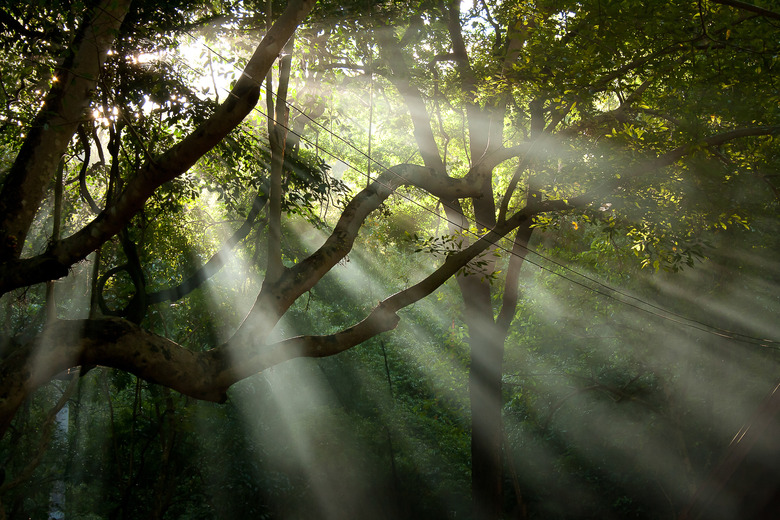Fun Rainforest Science Experiments
The complex web of life in the rainforest teems with possibilities for fun rainforest science experiments that explore the plant life, tropical weather and the products that come from the abundant array of flora and fauna.
Hands-on rainforest science activities with visible, easy-to-understand results keep students interested. Connecting rainforest science projects with products students use every day engages the personal association that makes learning about rainforest science fun.
Tropical Water Collectors
Tropical Water Collectors
Pineapples are part of the bromeliad family that serves as high altitude water collectors for the animal life that lives in the upper layers of the rainforest. The leaves channel water into a miniature water tank in the center, allowing wildlife access to water without having to descend to the forest floor where they would be susceptible to predators.
You can do a rainforest science project in order to demonstrate how this works. Select a healthy, fresh pineapple and cut the top off with about 3 inches of fruit still attached. Let it dry for 24 to 48 hours then scoop out the soft fruit but leave the core intact with the leaves. Plant the leafy top in a soil-filled pot, covering only the core with soil.
Set it in a sunny location and water, as necessary, to keep the soil wet. When you see new leaves growing in the center, place the plant outdoors, under shrubs or trees when the weather is warm. Continue to water it if it dries out. Check on it every day for two to several weeks and observe any creatures collecting in the center.
Cloud in a Bottle
Cloud in a Bottle
Water droplets form around small particles to make a cloud. As warm rising air cools and expands, air pressure decreases and clouds form. You can simulate your own cloud in a bottle with a tablespoon of water in a clear bottle.
Drop a lit match into the bottle to provide the particle base and cap it immediately. Squeeze the bottle several times to create the air pressure changes that compress and expand the air to form a cloud.
Rainforest Science Project: Rainforest Terrarium
Rainforest Science Project: Rainforest Terrarium
Plant a variety of tropical plants that grow to varying heights, such as:
- jungle vines
- ferns
- anthurium bush
- amapallo
- monkey cups
- sundews
- marsh pitchers
Botanique Nursery recommends clearing the moss away from the base of the plants.
Rainforest Rubber
Rainforest Rubber
Rubber and latex come from a milky white substance that many rainforest plants and trees produce when cut. Native inhabitants use it for waterproofing and medicinal purposes. Many toys, rain gear, medical supplies and other products are made from this multi-purpose rainforest product. Explore the uses of rubber by making your own rubbery material.
Wear rubber gloves as borax is a skin irritant. Mix 1 tablespoon borax with 1 cup of water. In a separate plastic container mix 25 ml white glue with 20 ml water until well mixed. Stir in 5 ml of the borax solution with a coffee stirrer or Popsicle stick.
As a solid substance begins to adhere to the stirrer, peel it off and knead it onto a paper towel until it loses its stickiness and becomes like putty. Experiment with stretching and bouncing the substance. Discuss how the properties of rubber relate to the types of products in which it is used.
Cite This Article
MLA
Hooser, Tamara Christine Van. "Fun Rainforest Science Experiments" sciencing.com, https://www.sciencing.com/fun-rainforest-science-experiments-8076809/. 22 November 2019.
APA
Hooser, Tamara Christine Van. (2019, November 22). Fun Rainforest Science Experiments. sciencing.com. Retrieved from https://www.sciencing.com/fun-rainforest-science-experiments-8076809/
Chicago
Hooser, Tamara Christine Van. Fun Rainforest Science Experiments last modified August 30, 2022. https://www.sciencing.com/fun-rainforest-science-experiments-8076809/
